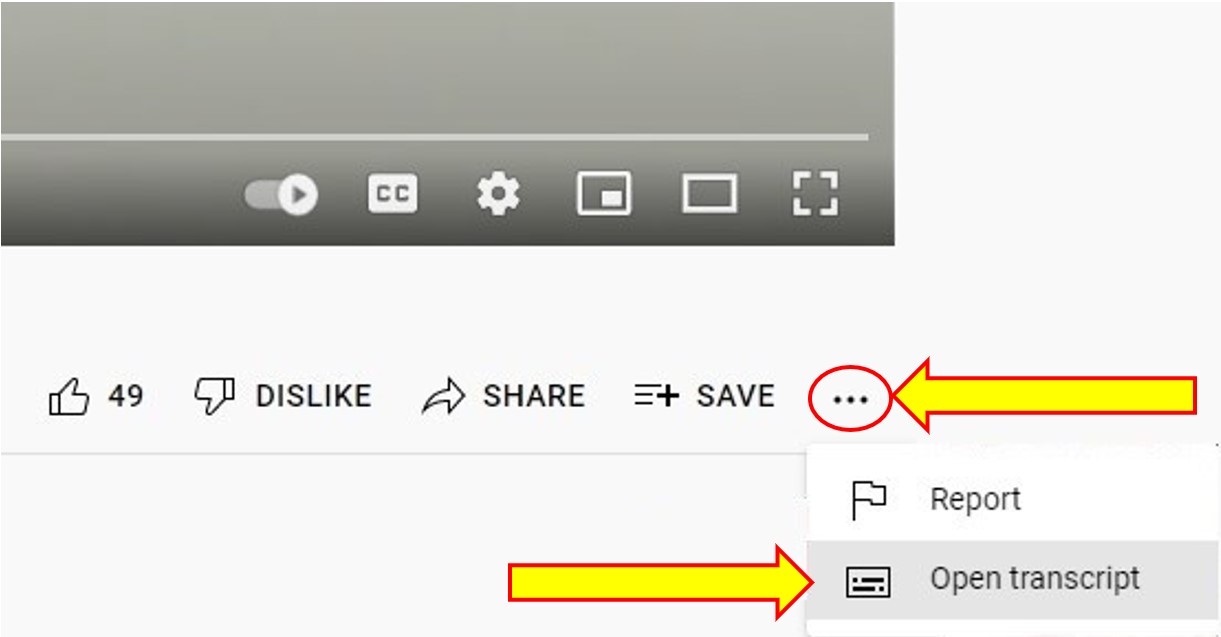9.1 Health Promotion, Prevention & Early Intervention, Substance Use and Youth, Preventions Programs, and Early Intervention Programs in Canada
Food for Thought
If you had to describe health, how would you describe it? When you add the word good or poor in front, does your definition change?
When we look at Health, we understand that there are many moving components that we need to look at. Health inequities include looking at the social determinants of health and the impact of policy development that shapes our health(1).
How can we use health promotion for people / who are impacted communities impacted by substance use? “Health promotion in the substance use field works at a broader level than substance use prevention, with the aim of strengthening health, well-being and resiliency, reducing stigma, and addressing the root causes of harmful behaviours” (2). This could be through affordable housing initiatives, playground development, school-based nutrition programs and more. Health promotion benefits individuals as well as communities and can be a strategy for supporting both people who use substances and people with a substance use disorder.
Creating Healthier Populations: Health Promotion and the Ottawa Charter. By Let’s Learn Health. In this video we take a brief look at Health Promotion, the process of enabling people to increase control over, and to improve their health. Health promotion is a very important part of public health and an essential component in any public health program(3).
Transcript
To Access the Video Transcript:
1. Click on “YouTube” on the bottom-right of the video. This will take you directly to the YouTube video.
2. Click on the More Actions icon (represented by three horizontal dots)
3. Click on “Open Transcript”

Activities
- Look up health promotion activities in your community that target the determinants of health. What did you find?
- What are the activities focused on? (Do they target a specific health outcome?)
- Who are the activities for? (Do they target a specific audience?).
- Are the activities inclusive? How?
Health promotion programs look broadly at communities and societies; health promotion programs may target individuals or communities. For example, harm reduction programs are part of a robust health promotion strategy to support individuals who use substances.
Activities
- Review the Health Promotion and Substance Use Toolkit Health Promotion and Substance Use Toolkit
- What are the Primary Goals?
Prevention and Early Intervention
Addiction prevention and early intervention are important to reduce substance use and substance use disorders in Canada.
Recognized as an important pillar of the continuum of health, “part of Health Canada’s role is to increase awareness among youth of the dangers of experimenting with illicit drugs, and to assist parents in keeping their kids drug-free” (4).
There are many prevention programs that focus on preventing substance use and substance use disorders. Some programs focus on substance specific prevention like alcohol, cannabis, and opioids. Other programs aim to prevent specific types of use, for example, inhalation versus injection use. Some programs are specific for vulnerable groups based on age, gender, and ethnicity, as well as factors like mental health, while others focus on community and society. There are a variety of factors, both risk and protective elements, which exist within each of these contexts. For programs to be effective, as we have discussed in previous chapters, they must look beyond the substance use to the intersections with health. Researchers suggest a mix of prevention interventions is required to address substance use disorders in communities and societies.
Prevention programs should consider comprehensive solutions that fit the needs of their communities and population, within a gender and cultural context and taking into consideration unique local circumstances, including community readiness. Some interventions may be evidence-based, while others may document their effectiveness based on other sources of information and empirical data.
Many programs in Canada are focused on preventing substance use as well as preventing use from becoming a disorder. These programs typically focus on age, and more specifically youth.
Substance Use and Youth

The early use of substances increases a person’s chances of developing a disorder as substance use often begins in adolescence (6). Young people aged 15 to 24 are more likely to experience mental illness and/or substance use disorders than any other age group (7). The risk of substance use increases greatly during times of transition. For a youth, developmental stages may result in higher risk-taking behaviour (8). A certain amount of risk-taking is a normal part of adolescent development; the desire to try new things and become more independent is healthy but it may also increase the risk of experimentation. The parts of the brain that control judgment and decision-making do not fully develop until people are in their early or mid-20s (9).
When youth enter high school, research suggests youth encounter greater availability of substances (10). According to the Canadian Centre on Substance Use and Addiction (11), approximately 62.3% of youth aged 15-17 engaged in early use of alcohol and 29.2% in early cannabis use over a year period. The research indicated that “among those under age 20, smokers were 14 times more likely to consume alcohol than were their non-smoking peers and were also more likely to engage in binge drinking (five or more drinks on one occasion)” (12).
Using substances at an early age has more potential to disrupt brain function in areas critical to motivation, memory, learning, judgment, and behaviour control (13). Studies also show the harms associated with early substance use include death by overdose and car accidents (14). Preventing early use of substances may reduce the number of people who develop a substance use disorder, and it may also reduce early mortality. Data from Public Safety Canada (15) found that childhood physical abuse is a strong predictor of substance use and those who are abused are more likely to develop a substance use disorder. Researchers, community advocates, and agencies have developed numerous interventions to address risk and protective factors for substance use. Each program may or may not work depending on the audience, the location, and the strategy. Public Safety Canada (16) has suggested each program must be tailored towards the audience as there is no one-size fits all when it comes to prevention programs.
Activities
- Choose 1 of the following youth intervention programs.
- What factors does this program address?
- How does this intervention include health promotion/social determinants of health?
- What is one change you would make to this intervention? Why?
Prevention Programs

Prevention programs funded in Canada work towards “increasing awareness and knowledge about the risks of problematic substance use and reducing the desire and willingness to obtain and use drugs” (17).
Prevention programs can focus on not only helping individuals develop the knowledge, attitudes, and skills they need to make good choices but address the larger systemic issues that impact their ability to understand the choices they make, focusing on risk reduction and health promotion(18). The programs are designed for various ages and can be used in individual or group settings, such as the school and home. Examples of a prevention program includes the Nova Scotia Municipal Alcohol Policy (19).
Early Intervention Programs in Canada
As information about substance use and substance abuse disorders grows, so have intervention strategies. The “Just Say No” Campaign and other programs focusing on how to refuse substances failed to address the determinants of health and their connection to substance use and abuse. Programs today focus on not only helping individuals develop the knowledge, attitudes, and skills they need to make good choices but address the larger systemic issues that impact their ability to understand the choices they make. For example, the Canadian Drugs and Substances Strategy includes prevention, treatment, harm reduction, evidence and enforcement, as well as funding for these initiatives (20).
Two examples of early intervention programs in Canada include Project SUCCESS (Schools Using Coordinated Community Efforts to Strengthen Students) (21) and ALERT (22). These programs focus on various intervention levels, including working with youth who have experimented with substances to those who are using substances more frequently. Using evidence to develop programs is essential for success. Please review Canada’s evidence base to view how programs gather data.
For diverse populations to benefit from prevention and early intervention programs, culture, gender, ability, and language must be considered at every step when developing and then implementing these programs.
Attribution:
Exploring Substance Use in Canada by Julie Crouse is licensed under a Creative Commons Attribution-NonCommercial-ShareAlike 4.0 International License, except where otherwise noted.
References
- CCSA. (2014). Substance Use Prevention and Health Promotion. Retrieved April 28, 2022, from https://www.ccsa.ca/sites/default/files/2019-04/CCSA-Substance-Use-Prevention-Health-Promotion-Toolkit-2014-en.pdf
- Conduent Healthy Communities Institute. (2022). Project SUCCESS. Retrieved April 28, 2022, from https://cdc.thehcn.net/promisepractice/index/view?pid=3860
- Let’s Learn Public Health. (2017, March 4). An Introduction to Health Promotion and the Ottawa charter [Video]. YouTube. https://www.youtube.com/watch?v=G2quVLcJVBk
- RAND Corporation. (n.d.). Classroom Drug Prevention Works. Retrieved April 27, 2022, from https://www.rand.org/pubs/research_briefs/RB4560.html
- Western Health. (2021). Mental health promotion & substance use prevention school health promotion resources: Primary: Kindergarten to Grade 3. https://westernhealth.nl.ca/uploads/Addictions%20Prevention%20and%20Mental%20Health%20Promotion/School%20Health%20Promotion%20%20Primary%20K-3.pdf
- Government of Canada. (2016) Drug prevention, (para. 2). https://www.canada.ca/en/health-canada/services/health-concerns/drug-prevention-treatment.html
- Western Health. (2021). Mental health promotion & substance use prevention school health promotion resources: Primary: Kindergarten to Grade 3. https://westernhealth.nl.ca/uploads/Addictions%20Prevention%20and%20Mental%20Health%20Promotion/School%20Health%20Promotion%20%20Primary%20K-3.pdf
- Schulte, M. T., & Hser, Y. I. (2014). Substance use and associated health conditions throughout the lifespan. Public Health Reviews, 35(2) .https://doi.org/10.1007/BF03391702
- Statistics Canada. (2015). Mental and substance use disorders in Canada. https://www150.statcan.gc.ca/n1/pub/82-624-x/2013001/article/11855-eng.htm
- Schulte, M. T., & Hser, Y. I. (2014). Substance use and associated health conditions throughout the lifespan. Public Health Reviews, 35(2) https://doi.org/10.1007/BF03391702
- Winters, K. C., & Arria, A. (2011). Adolescent brain development and drugs. The Prevention Researcher, 18(2), 21–24. https://www.ncbi.nlm.nih.gov/pmc/articles/PMC3399589/
- Dalhousie University. (2013). Student drug use survey: 2012. Communication Nova Scotia. https://novascotia.ca/dhw/publications/Student-Drug-Use-Survey-Report.pdf
- Canadian Centre on Substance Use and Addiction. (2005). Canadian addiction survey (CAS): A national survey of Canadians’ use of alcohol and other drugs: Prevalence of use and related harms: detailed report. https://www.ccsa.ca/canadian-addiction-survey-cas-national-survey-canadians-use-alcohol-and-other-drugs-prevalence-0
- Ibid, p. 24
- Winters, K. C., & Arria, A. (2011). Adolescent brain development and drugs. The Prevention Researcher, 18(2), 21–24. https://www.ncbi.nlm.nih.gov/pmc/articles/PMC3399589/
- Schulte, M. T., & Hser, Y. I. (2014). Substance use and associated health conditions throughout the lifespan. Public Health Reviews, 35(2). https://doi.org/10.1007/BF03391702
- Public Safety Canada. (2018). School-based drug abuse prevention: Promising and successful programs. https://www.publicsafety.gc.ca/cnt/rsrcs/pblctns/sclbsd-drgbs/index-en.aspx#ftn34
- Ibid.
- Government of Canada. (2019). Canadian drugs and substances strategy. https://www.canada.ca/en/health-canada/services/substance-use/canadian-drugs-substances-strategy.html?utm_source=vanity_url&utm_medium=url_en&utm_content=redirect_justice_nationalantidrugstrategy.gc.ca&utm_campaign=pidu_14/index.html
- Government of Canada. (2018). The Chief Public Health Officer’s report on the state of public health in Canada 2018: Preventing problematic substance use in youth. https://www.canada.ca/en/public-health/corporate/publications/chief-public-health-officer-reports-state-public-health-canada/2018-preventing-problematic-substance-use-youth.html
- Canadian Centre on Substance Use and Addiction. (2017). The Nova Scotia municipal alcohol project. https://ccsa.ca/sites/default/files/2019-04/CCSA-Municipal-Alcohol-Policy-Nova-Scotia-2017-en.pdf
- Government of Canada. (2019). Canadian drugs and substances strategy. https://www.canada.ca/en/health-canada/services/substance-use/canadian-drugs-substances-strategy.html?utm_source=vanity_url&utm_medium=url_en&utm_content=redirect_justice_nationalantidrugstrategy.gc.ca&utm_campaign=pidu_14/index.html
- Conduent. (2021). Project SUCCESS. https://cdc.thehcn.net/promisepractice/index/view?pid=3860
- Tucker, J. S., Ellickson, P. L., Klein, D. J., McCaffrey, D. F., Ghosh-Dastidar, B. & Longshore, L. (2004). Classroom drug prevention works: But left unchecked, early substance use haunts older teens and young adults. RAND Corporation. https://www.rand.org/pubs/research_briefs/RB4560.html.

